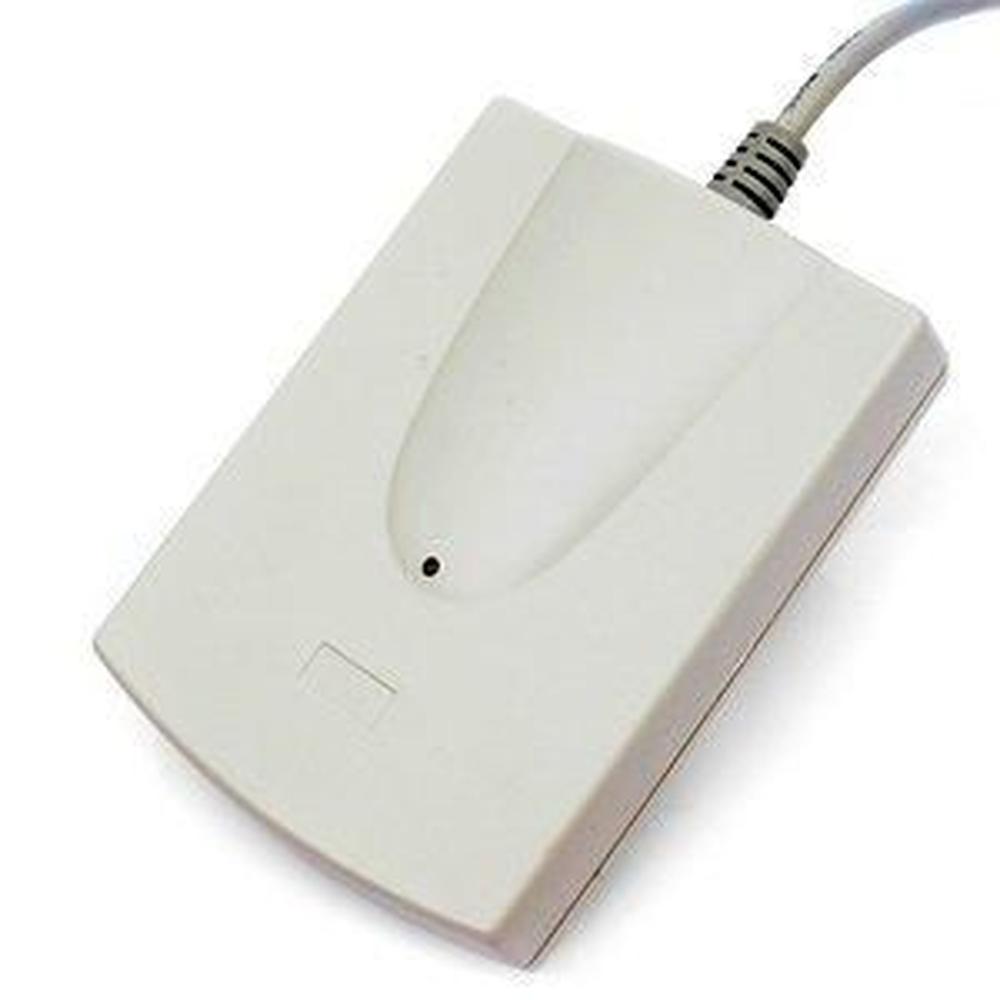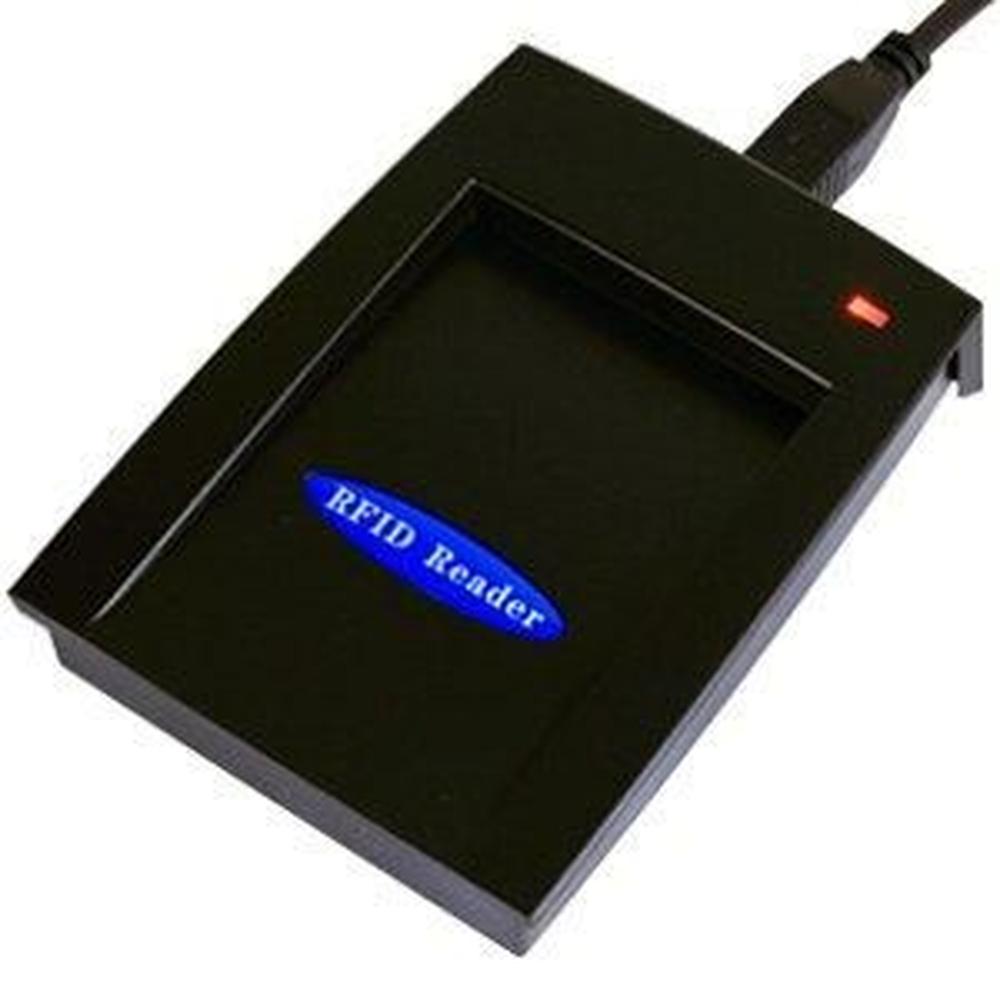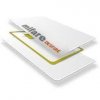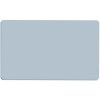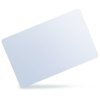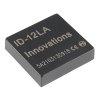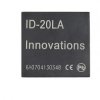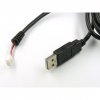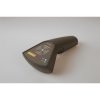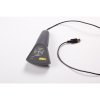Operating frequency
There are three main frequencies available for RFID readers:
• 125 kHz (LF band)
• 13,56 MHz (HF band)
• 868 MHz (UHF band)
This is the first and the most important parameter when you are looking for the right reader. The working frequency has a major influence on the reader’s reading distance.
With UHF reader it is possible to reach a reading distance of several meters. HF and LF readers, on the other hand, have typical reading distances of around 3-15cm. UHF readers are most suitable for warehouse management systems, while LF and HF readers are used mainly in human tracking, attendance, and electronic wallet applications.
Tag antenna
Coil antenna has a big impact on reading distance, e.g. clamshell ISO card tags can reach the best reading distances of up to 20cm with standard readers. HF readers use etched PCB antennas, reading distances can reach 15-20cm.
HF tags (e.g. MIFARE® technology) are more suitable for security-critical applications because they use secure authentication techniques, while 125kHz tags (e.g. Unique, also known as EM4100/TK4100/GK4100/EM4200 tag chips) use a unique 64-bit code pre-programmed during the manufacturing process at the factory. This code could be easily written in a special tag’s memory (tag chips T5577) and thus clone the original tag.
HF tags use mainly MIFARE® chips, also known as ISO14443, with password-protected memory area, which can be used to store protected information, e.g. prepaid balance at a waterpark or in public transportation applications.
MIFARE® and NFC tags (using chips MIFARE® Ultralight, S50, Desfire, NTAG203/213, etc) can be easily read out using a smartphone, just download e.g. TagInfo application from NXP or similar, turn on NFC on your smartphone and run the application. Put the tag close to your smartphone and you can see information about the card itself and memory capacity, UID, chip manufacturer, etc.
NXP´s Android application screenshot:
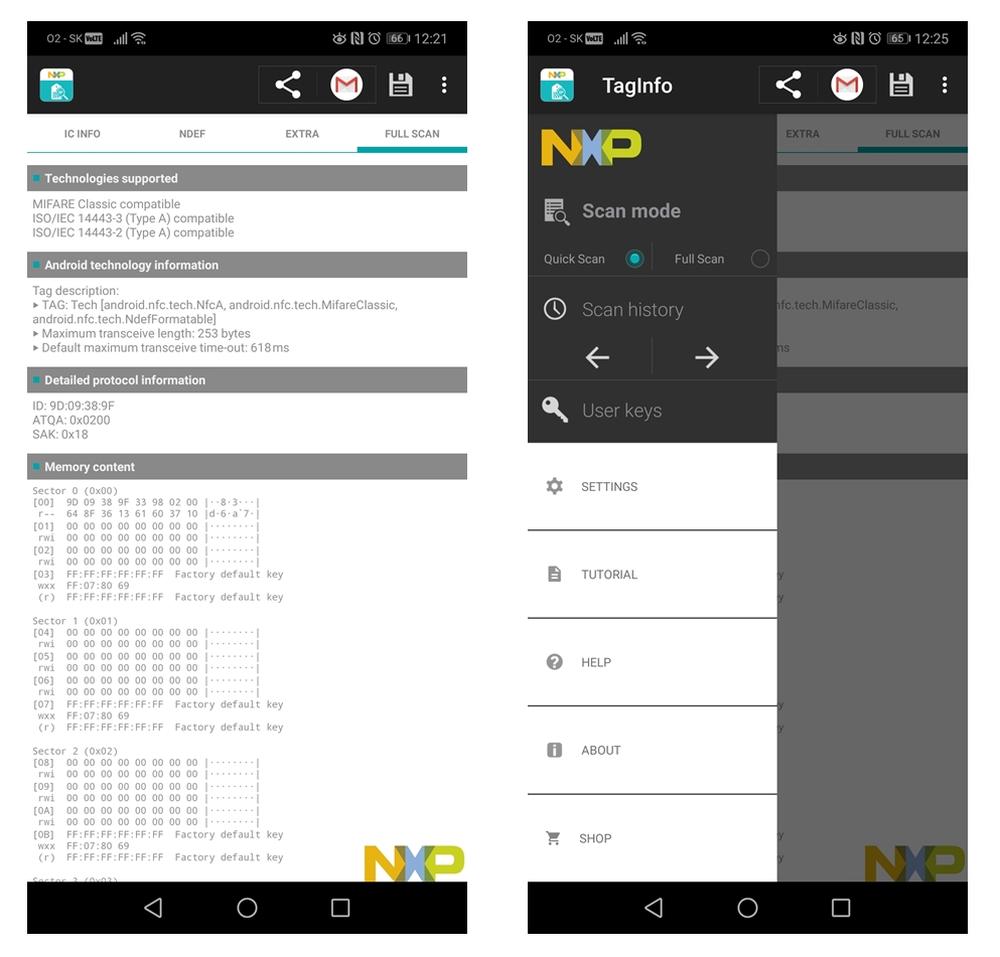
Communication interface/protocol
Different readers use different communication interfaces or protocols. The most common interface nowadays is RS232 and USB, but readers with Wiegand, I2C or RS485 can also be found. Even readers with 1-Wire (DALLAS) interface are available.
These readers are suitable to replace outdated DALLAS contact readers and upgrade the attendance systems to modern RFID technology. Wiegand26 interface was mainly used with outdated magnetic strip cards. RFID readers with Wiegand interface are available to replace outdated magnetic stripe readers in the field.
It is important to always check the communication interface and protocol of a certain reader before the purchase because different protocols and interfaces are available e.g. HID, the Serial UART virtual port via USB port emulation is available. etc.
Internal memory
Some RFID readers contain internal memory and can operate autonomously by operating an electric lock. These RFID readers operate mainly in the LF band and have higher IP ratings and robust enclosure for outdoor mounting.
Tags
Tags are available in many different shapes and colours. The most common is the white card with the size of an 85x54x0.7mm ISO card, which can be easily printed and personalized.
The Clamshell card is the same colour but thicker (2mm); this card is equipped by a high gain coil antenna and can achieve far better reading distances comparing to standard ISO card.
For space-saving applications, there are keyfobs and wristband shaped tags available in different colours and shapes. The reading distance for such tags is limited because of the maximum size of the internal coil antenna embedded.
Even glass tags with sizes 13,3x3,15mm for animal marking and other special applications are available.
The most common RFID products can be found in our range of products available directly from our stock or on order. If you need more information, we are glad to help you at sales@soselectronic.com
MIFARE® and MIFARE Classic® are registered trademarks of NXP B.V.

